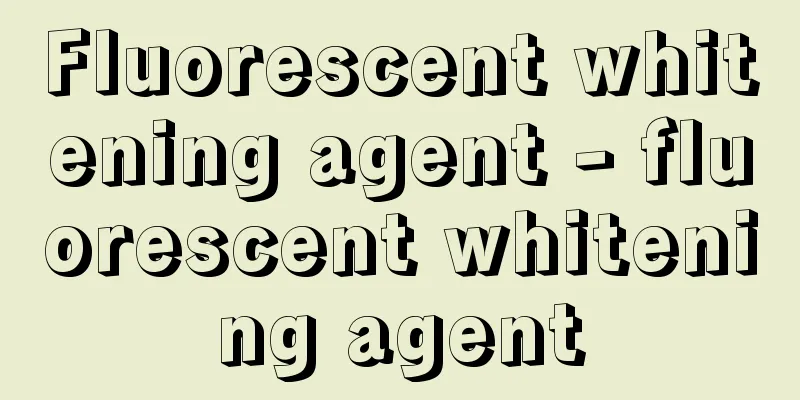Rhyme - King

|
Rhetorical device in which the same or similar sounds are used to rhyme. When they are at the beginning of a word, they are called alliteration. When they are at the end of a word, they are called rhyme. When only vowels are used, or when similar sounds are used, they are called assonance. Hagiwara Sakutaro, who was strict about the rhythm of poetry, stated that while Japanese poetry, including waka, also has rhyming patterns such as alliteration, rhyme, double rhyme, and parallel rhyme, these are not conscious as in the West, but rather arise naturally.He gave as a typical example of alliterative poetry, ``Look carefully at Yoshino, where they say good people are good, look carefully at good people,'' and as an example of rhyme, ``Ashibiki no yamadori no o no shidari o no nagaga shi yoru wo hitori mo nemu,'' which doubles the ``no'' sound at the end of a stanza. Originally, Japanese was considered to be an unsuitable language for rhyming, especially rhyming, but in the Showa era, poets such as Sato Ichiei attempted to write four-line fixed form poems with alliteration and rhyming in such anthologies as "Shin-Ryū Shishō" (1935) and the group poem "Soraumi no Tatae" (1939): "The bells ring but the mountains are asleep/The gods are raised but on the banks of Yamato/The double cherry blossoms fall without a word/The banks are noble." Furthermore, poets of the Matinee Poétique such as Nakamura Shinichiro and Fukunaga Takehiko, who inherited the theory of rhythm contained in Kuki Shuzo's "Bungeiron" (1941), practiced fixed-form rhyming poetry modeled on Western poets ("Matinee Poétique Collection of Poems", 1948). The history of fixed rhyming poetry in Western Europe is long, and Baudelaire's "Flowers of Evil" is a fixed form poem with well-defined rhymes. The first three lines of Verlaine's "Autumn Song", famous for Ueda Bin's excellent translation, "Les sanglots longs/Des violins/De l'automne", repeat the alliteration of l and n and the semitone of o, creating a beautiful harmony. However, on the other hand, there are also blank verse poems, such as Shakespeare's dramatic poems, and in France, after the free verse movement at the end of the 19th century, free verse came to dominate poetry, replacing fixed rhyming verse. [Kubota Haniya] [Reference] |Source: Shogakukan Encyclopedia Nipponica About Encyclopedia Nipponica Information | Legend |
|
同一音または類音をもって韻を踏む修辞法。語頭にあるものを頭韻(アリタレーション)、語尾にあるものを脚韻(ライム)、母音のみの押韻、類音の一致を半諧音(かいいん)(アソナンス)という。 詩の韻律に厳しかった萩原朔太郎(はぎわらさくたろう)は、和歌をはじめとするわが国の詩歌にも、頭韻、脚韻、畳韻、対韻などの押韻様式があるが、それは西欧の場合のように意識的なものではなく、自然発生的なものであると規定し、頭韻歌の典型として、「善(よ)き人の善しと善く見て善しと言ひし吉野よく見よ善き人よく見つ」、脚韻の例として句節の終わりにnoの音を重ねている「あしびきの山鳥の尾のしだり尾の長々し夜を独りかも寝む」をあげている。 元来、日本語は押韻、とくに脚韻には不適な言語とされてきたが、昭和になってから、佐藤一英(いちえい)のような詩人は『新韻律詩抄』(1935)、聯組詩(れんそし)『空海頌(そらうみのたたえ)』(1939)などの詩集において、頭韻、脚韻を踏んだ四行定型詩を試みている。「鐘鳴れど山は眠れり/神ませど大和(やまと)のほとり/語るなく八重桜散り/かたほとりやんごとなかり」。また、九鬼(くき)周造『文藝(ぶんげい)論』(1941)のなかの韻律論を継承した中村真一郎、福永武彦(たけひこ)などのマチネ・ポエティクの詩人たちは、範を西欧の詩人にとった定型押韻詩を実践した(『マチネ・ポエティク詩集』1948)。 西欧における定型押韻詩の歴史は古く、ボードレールの『悪の華』は脚韻がきちんと踏まれた定型詩である。上田敏の名訳によって名高いベルレーヌの「秋の歌」の冒頭の3行「Les sanglots longs/Des violins/De l'automne」には、lとnの頭韻とoの半諧音とが反復され、それが美しい諧調をなしている。しかし、一方においてはシェークスピアの劇詩のように無韻詩(ブランク・バース)で書かれたものもあり、またフランスにおいては19世紀末の自由詩運動以後、押韻定型詩にかわって自由詩が詩の主流を占めるようになった。 [窪田般彌] [参照項目] |出典 小学館 日本大百科全書(ニッポニカ)日本大百科全書(ニッポニカ)について 情報 | 凡例 |
Recommend
Carpenter - Daiku
A craftsman of wooden architecture. In the 5th ce...
Great Basin
A large, dry basin in the western United States. I...
Burhinidae
…A general term for birds in the family Burhinida...
Dollar, D. (English spelling) DollarD
…After the Russian Revolution, he abandoned poetr...
Ohataki
...A food made by soaking raw rice in water to so...
Oshu Highway - Oshu Kaido
<br /> The remains of a highway in Ichinohe ...
Nessler, K.
…The method of curling hair, Marcel Wave, created...
Schultz, Howard
Born July 19, 1953, in New York. Founder of the gl...
"Fallen Leaves of a Painted Pine Tree"
...Volumes 1 to 4 mainly contain Kabuki dance son...
Emperor - Kaiser (English spelling) German
The title of supreme secular ruler = monarch. [Sh...
nucleus loci cerulei (English spelling) nucleus loci cerulei
...When the substantia nigra is damaged for vario...
Ashio [town] - Ashio
A former town in Kamitsuga County, western Tochigi...
Kawabe Wholesaler
...Furthermore, with the development of early mod...
Round planthopper (English name) Gergithus variabilis
Order Hemiptera, suborder Homoptera, family Ophiop...
Office automation equipment industry
...The business machine industry is an industry t...









